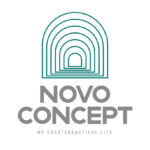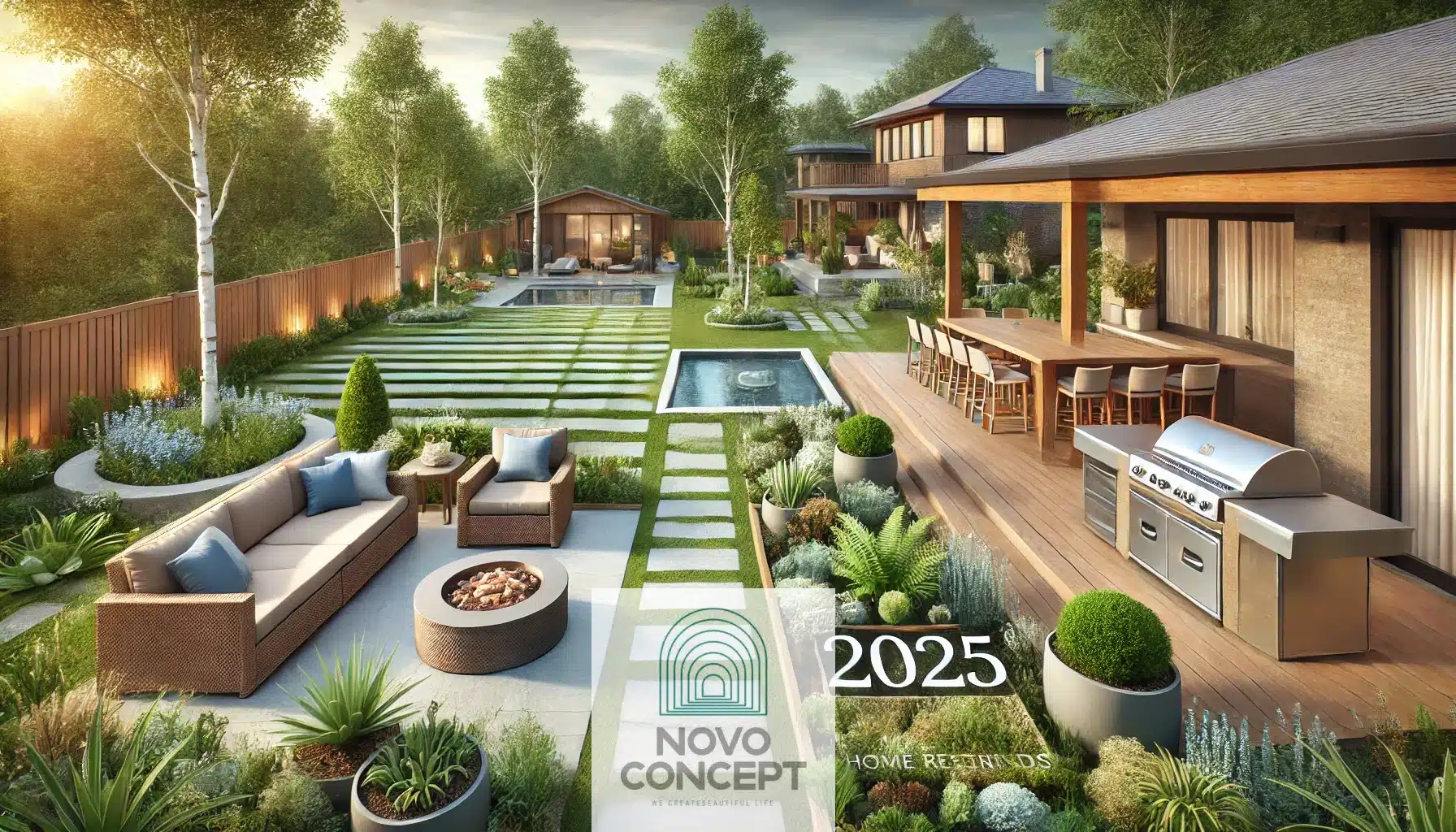As we step into 2025, the home renovation landscape continues to evolve, driven by changing lifestyles, technological advancements, and a growing focus on sustainability. Whether you’re planning a complete overhaul or a subtle refresh, understanding the latest trends can help you make informed decisions and create spaces that are both functional and stylish. Here are the top home renovation trends expected to dominate in 2025 from Novo Concept.
1. Sustainable Design and Materials in Home Renovation
Sustainability remains at the forefront of home renovation trends. Homeowners are increasingly choosing eco-friendly materials, energy-efficient appliances, and designs that minimize environmental impact. Expect to see a rise in:
- Recycled and upcycled materials: From reclaimed wood flooring to furniture made from repurposed materials, sustainability is influencing every aspect of home design.
- Energy-efficient solutions: Solar panels, smart thermostats, and energy-efficient windows are becoming standard choices for eco-conscious homeowners.
- Water-saving fixtures: Low-flow toilets, water-efficient showerheads, and greywater systems are gaining popularity as water conservation becomes a priority.
2. Smart Homes with Integrated Technology
Technology continues to revolutionize how we interact with our homes. In 2025, smart home features are more integrated and user-friendly than ever, enhancing both convenience and security. Key trends include:
- Voice-activated systems: From controlling lighting to managing home security, voice-activated devices are becoming indispensable.
- Smart kitchens: Appliances that sync with smartphones, smart refrigerators with inventory tracking, and automated coffee makers are reshaping kitchen functionality.
- Integrated home networks: A centralized system to control lighting, temperature, security, and entertainment is becoming a standard feature in modern homes.
3. Multi-Functional Spaces
As remote work and hybrid lifestyles persist, homes are being designed to accommodate multiple functions within the same area. Multi-functional spaces that adapt to changing needs are a key trend in 2025. Examples include:
- Home offices with dual purposes: Spaces that serve as a home office during the day and a guest room at night.
- Convertible furniture: Murphy beds, foldable desks, and extendable dining tables maximize usability in smaller spaces.
- Zoned open layouts: Open floor plans with defined zones for work, relaxation, and socializing are replacing traditional room divisions.
4. Wellness-Centered Design
Health and wellness are becoming central to home design. In 2025, renovations are focusing on creating spaces that promote physical and mental well-being. Key features include:
- Biophilic design: Incorporating natural elements like indoor plants, living walls, and water features to enhance air quality and reduce stress.
- Home spas: Bathrooms are transforming into luxurious retreats with features like steam showers, soaking tubs, and saunas.
- Wellness rooms: Dedicated spaces for yoga, meditation, or exercise are increasingly being incorporated into home designs.
5. Bold Colors and Personalization
After years of minimalist and neutral palettes, bold colors and personalized designs are making a comeback. Homeowners in 2025 are embracing individuality through:
- Statement walls: Vibrant paint colors, bold wallpaper patterns, and textured finishes are adding personality to rooms.
- Customized decor: Unique artwork, bespoke furniture, and family heirlooms are being incorporated into modern designs.
- Mixing styles: Eclectic combinations of modern, vintage, and global influences are creating spaces that reflect personal tastes.
6. Outdoor Living Spaces
Outdoor areas are becoming extensions of the home, providing additional living and entertainment spaces. In 2025, expect to see:
- Outdoor kitchens: Complete with grills, sinks, and refrigerators, outdoor kitchens are perfect for alfresco dining.
- Cozy patios and decks: Fire pits, comfortable seating, and weather-resistant fabrics make outdoor spaces usable year-round.
- Sustainable landscaping: Native plants, xeriscaping, and rain gardens are gaining popularity as homeowners prioritize eco-friendly outdoor designs.
7. Vintage and Retro Styles
Nostalgia is influencing home design, with vintage and retro styles making a strong comeback. In 2025, these styles are reimagined with modern twists:
- Mid-century modern elements: Sleek lines, organic shapes, and functional designs inspired by the mid-20th century are trending.
- Art Deco influences: Luxurious materials, geometric patterns, and bold colors are reminiscent of the 1920s and ’30s.
- Repurposed vintage pieces: Incorporating vintage furniture and decor adds charm and character to modern homes.
8. Kitchen as the Heart of the Home
Kitchens remain the focal point of home renovations, with designs that emphasize functionality, style, and socializing. Key trends include:
- Open-concept kitchens: Seamlessly integrated with living and dining areas for easy interaction.
- Statement islands: Large, multifunctional islands with seating, storage, and built-in appliances.
- Colorful cabinetry: Moving away from all-white kitchens, homeowners are opting for bold colors like navy, green, and even black.
9. Sustainable Energy Sources
As energy costs rise and environmental concerns grow, sustainable energy sources are becoming integral to home renovations. Trends include:
- Solar power integration: Solar panels are being designed to blend seamlessly with roofing materials.
- Battery storage systems: Advanced systems for storing solar energy ensure uninterrupted power supply.
- Geothermal heating and cooling: These systems are becoming more accessible and efficient.
10. Aging-in-Place Designs in Home Renovation
With an aging population, homes are being renovated to accommodate long-term living. Aging-in-place designs focus on accessibility and comfort:
- Wider doorways and hallways: To accommodate wheelchairs and walkers.
- Barrier-free bathrooms: Walk-in showers, grab bars, and non-slip flooring enhance safety.
- Smart home features: Voice-controlled systems and automated lighting improve convenience for older adults.
Conclusion of Home Renovation trends
The home renovation trends for 2025 reflect a shift toward sustainability, technology integration, and personalization. By embracing these trends, homeowners can create spaces that not only meet their functional needs but also enhance their quality of life. Whether you’re renovating a single room or your entire home, staying informed about these trends will ensure your investment is future-proof and aligned with contemporary styles.






